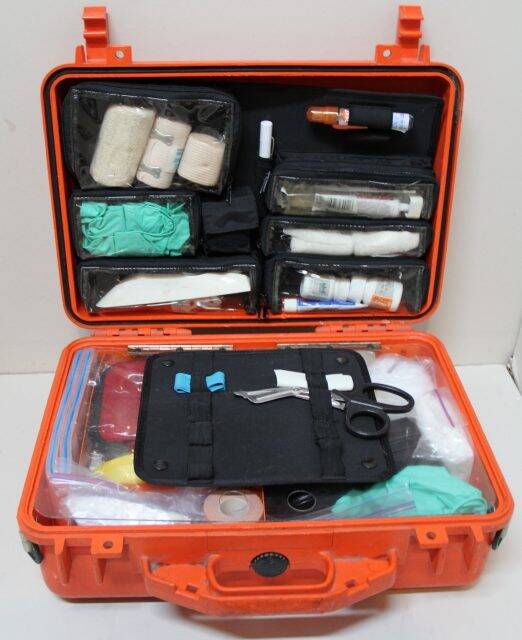Safety gear guide for day hikes
When heading out on a day hike, it may be tempting to leave all your overnight gear behind. However, it is dangerous to hike without proper emergency gear even on a day hike.
Weather can drastically change, you may get lost, and injuries can occur. Being stuck out on the trail without the proper safety gear is a nightmare. Check out our Outdoor Revival, Safe Hiking Checklist, for your next hike!
Proper Shoes

For starters, make sure you are wearing the proper shoes for your hike. Don’t set out on a 15-mile hike in a pair of converse sneakers. For safety, make sure you have proper ankle support and good socks to prevent blisters.
Sufficient Amount of Water
Make sure you bring enough water for your hike distance and location. If you are planning to filter water on the go, you need to check and make sure the rivers are flowing before heading out.
Many forests have websites where you can check the flow of seasonal rivers. In addition, asking other hikers you see leaving the trail is a great way to check.
Map and Compass

Maps are an essential safety item to bring with you. Print out a map of the trail or get one from a visitors center before starting your hike.
In addition to knowing your trail, be aware of the surrounding areas as well. This will help if you end up getting lost and prevent you from walking in unnecessary circles.
Food
If you are on a long day hike you are going to need to stop and eat at some point. Trail mix, oranges, apples, and PBJ’s are some of my favorites. Always pack a little more food than you think you will eat in case you get stuck and need to stay overnight.
In addition, make sure to always respect leave no trace rules and clean up after yourself (this includes orange peels people!).
Warm Clothes
Even if you are hiking on an 85-degree day, throw a jacket or long sleeve in your daypack. For safety, you should make sure you have the proper clothing to keep you warm if you get stuck. Bringing an extra pair of socks is also a good idea in case yours get wet, and to stay warm.
Head Lamp or Flashlight
You should always bring a headlamp or flashlight on a day hike. Even if you don't get stuck overnight, your hike may take longer than you anticipated. Having proper gear to guide you back to the trailhead in the dark is a safety measure you should take.
Saftey First Aid Kit

You don’t need to go all out here, but you should be bringing a minimal first aid kit. You can buy these at a local outdoor store or make your own. Bandaids, material to make a sling, packing gauze, and some hydrogen peroxide are a great place to start. Try to match your first aid kit to your adventure by thinking of possible injuries. Tweezers are also a great addition and very light!
Fire Starter or Matches
Matches may seem like overkill, but when you break your ankle and are forced to stay the night on the trail, you will thank yourself. Waterproof matches are a little more expensive, but always worth it in the end.
In addition, you should make sure you know how to make a fire in case you need to stay warm or make a signal.
Multi-tool with Knife
Having a multi-tool is great for first aid purposes. Likewise, having a knife with you is always a good rule of thumb. You can use this to cut clothes and make a sling or protect yourself from an animal attack.
Outdoor Revival – Reconnecting us all with the Outdoors





